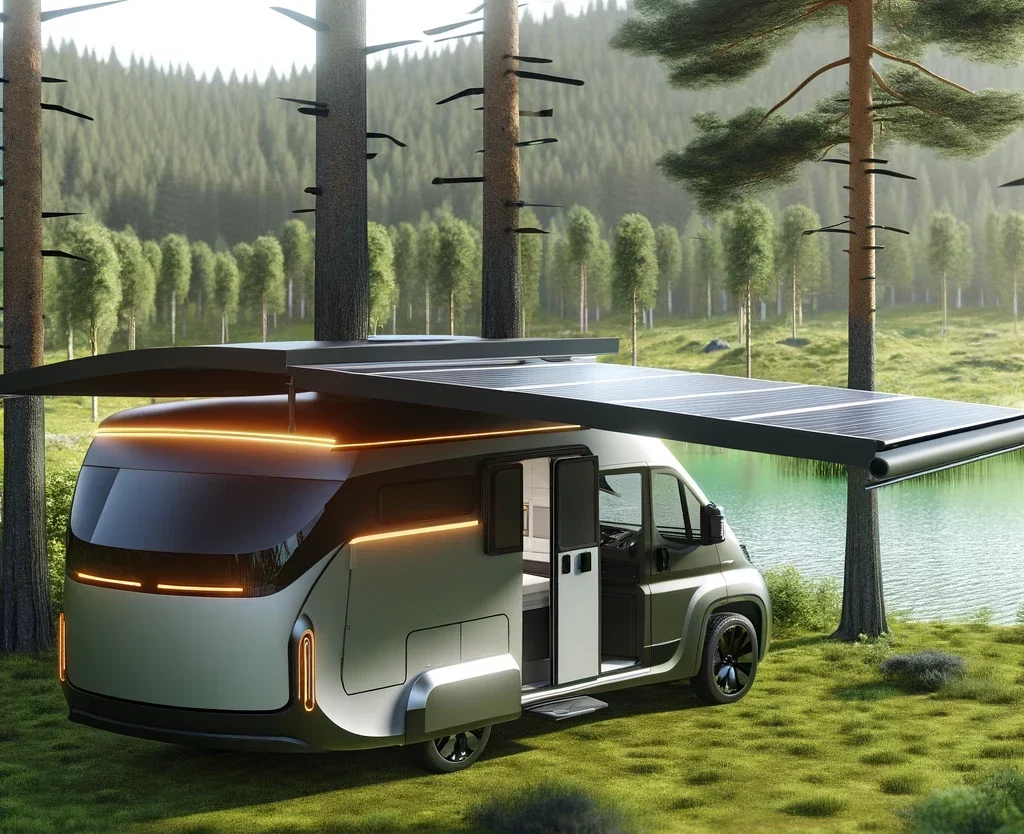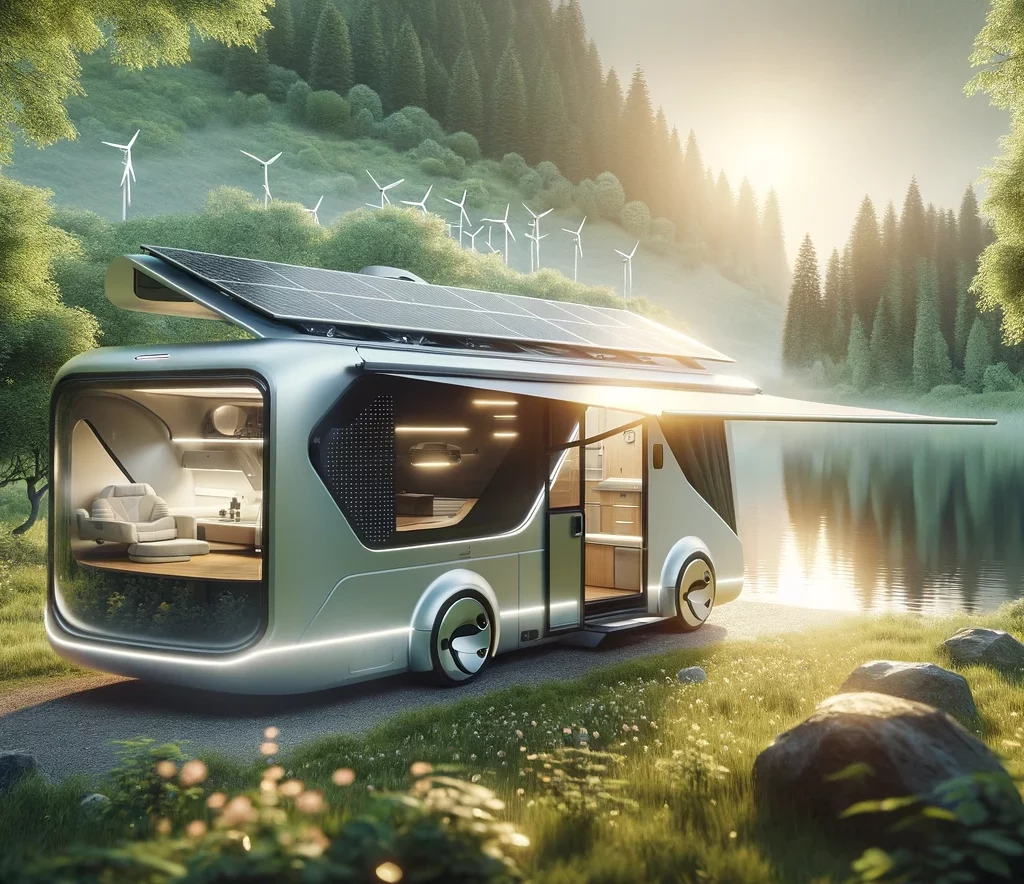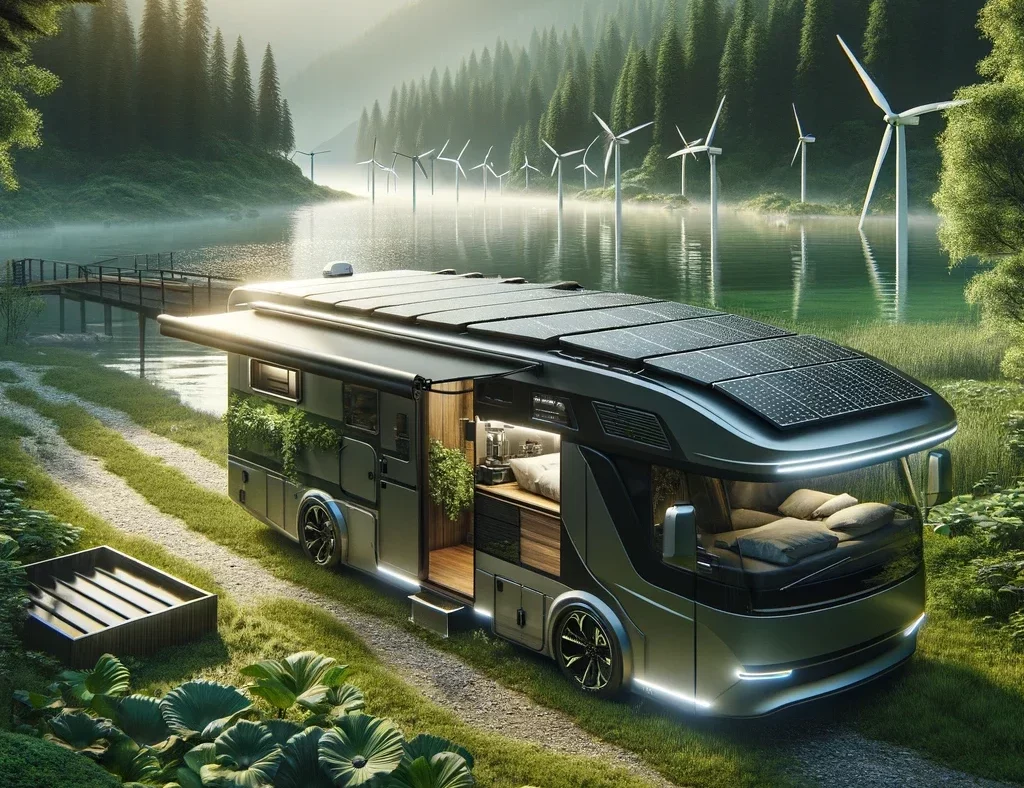Since childhood, the dream of a self-sustaining motor home has captivated my imagination. The idea of a motor home that not only provides the comforts and freedom of home on the move but also operates entirely on clean energy represents a leap towards a future of unparalleled autonomy and eco-clean living. This vision embodies the pinnacle of innovation, sustainability, and independence, offering a true sense of self-reliance and freedom. In this article, we road-test the concept of self-generating motor homes, imagining potential technologies that could bring this dream to life and evaluating the profound impact they could have on our travel habits, lifestyle choices, and environmental footprint.
Engage with the Vision: What are your thoughts on a self-sustaining motor home? Can you imagine yourself living or travelling in one? How do you think this could change your travel experiences or lifestyle? Share your views and join the discussion on envisioning a future of sustainable and autonomous living.
The Vision of Self-Generating Motor Homes

This idealization is not just any vehicle; it is a fully electric habitat on wheels, capable of generating its own power for prolonged journeys. Imagine embarking on endless adventures without the need to stop for fuel, relying instead on the very elements around us – the sun, wind, and the motion of the vehicle. This vision includes a motor home that is not only a means of transportation but also a self-sufficient living space, harnessing renewable energy to provide all the comforts of home, from electricity and heating to fresh water and waste management.
Key Technologies for Autonomy
Solar Power Integration
Solar panels, in a lightweight, flexible format, will cover the motor home’s surface, harnessing sunlight to produce electricity. A large, flexible solar panel could also be unfurled from the motor home’s awning when stationary, augmenting the existing coverage and substantially expanding the energy-generating surface area without necessitating extra space. This system must be highly efficient and capable of storing surplus energy in advanced batteries for times when sunlight is unavailable.
Integrated Wind Energy

The concept of integrated wind energy involves harnessing the natural power of the wind through a series of small, integrated wind turbines. These turbines would be strategically aligned across the width of the motor home’s roof, running the length of the configuration. The design would allow each turbine to capture the airflow from the one immediately in front of it, thereby enhancing the overall efficiency of wind energy capture. This method takes advantage of the vehicle’s movement, as the relative wind speed increases while the vehicle is in motion, leading to potentially higher energy generation compared to stationary wind turbines.
These turbines should be designed to be efficient, small, and lightweight. The importance of maintaining the vehicle’s aerodynamic properties cannot be overstressed; hence, the turbines should be integrated into the roof in a way that minimizes drag and turbulence. This could involve designing the turbines with a streamlined shape and positioning them so they blend seamlessly with the vehicle’s contours.
Furthermore, the turbines should be constructed from materials that are both lightweight and durable to avoid significantly increasing the vehicle’s weight. Excessive weight could lead to decreased fuel efficiency and increased energy consumption for movement, counteracting the benefits of the added wind energy generation.
The energy harvested by these turbines will be stored in the vehicle’s battery system, providing an additional power source for electrical systems and reducing reliance on external energy sources. This integrated approach not only enhances the sustainability of the motor home but also extends the possible range and autonomy of the vehicle, making it an appealing feature for eco-conscious travellers seeking independence from traditional energy grids.
Additionally, to ensure safety and longevity, these turbines would need to be equipped with mechanisms to protect against high-speed winds and potential debris. This could include automatic braking systems or retractable designs that safeguard the turbines when not in use or during adverse weather conditions.
Regenerative Braking
This technology converts the kinetic energy lost during braking back into electricity, which is then stored in the vehicle’s battery. This feature would be particularly beneficial in a motor home, where the weight and long distances travelled can lead to significant energy recapture.
Advanced Battery Storage
High-capacity, lightweight batteries are crucial for storing energy generated through solar and wind sources, ensuring that power is available whenever needed. The integration of smart battery management systems can optimize energy distribution within the motor home, extending battery life and ensuring self-sufficiency under various conditions.
Sustainable Living Additions

Beyond propulsion, a self-generating motor home would incorporate sustainable practices into every facet of its design.
Incorporating a rainwater harvesting system into the vehicle design is an innovative approach to enhancing sustainability and water self-sufficiency. This concept not only aligns with global efforts to conserve water but also introduces a novel utility for vehicles, especially in regions prone to water scarcity or those looking to reduce their environmental footprint. Let’s explore the components and potential benefits of this system in more detail.
Key Components
Collection Surfaces: The windscreen and roof are engineered with slight slopes and channels, optimizing the surface area for maximum water collection. The design ensures that rainwater is efficiently guided towards the collection points, even at high speeds.
Filtration System: Before storage, rainwater passes through a filtration unit to remove debris. It can use simple mesh filters or advanced materials like activated carbon. Additional treatment may include UV disinfection, chlorination, pH adjustment, or even reverse osmosis for comprehensive purification, ensuring the water meets drinking standards.
Storage Tank: A dedicated tank within the vehicle stores the collected rainwater. This tank is designed to be robust and leak-proof, with materials resistant to corrosion and bacterial growth. Its size and placement within the vehicle are optimized to balance water storage capacity with space-saving considerations.
Overflow Prevention: Incorporating sensors and a smart control system enables the vehicle to monitor the water level in the storage tank. Once the tank reaches capacity, the system automatically redirects any additional rainwater away from the collection points, preventing overflow and potential water damage to the vehicle’s systems.
Operational Mechanics

While Moving: As the vehicle moves, rainwater hits the windscreen and roof, flowing into the designed channels. The dynamic collection system takes advantage of the vehicle’s motion and the natural flow of water, ensuring efficient collection without the need for additional power sources.
While Stationary: The system remains active even when the vehicle is parked, collecting rainwater directly into the storage tank. This passive collection method ensures that every opportunity to harvest rainwater is utilized, maximizing water accumulation over time.
Challenges and Solutions
While the vision is compelling, the path to realization is filled with challenges, including technological limitations, cost, and infrastructure concerns. However, advancements in renewable energy technology, materials science, and automotive engineering are continually narrowing these gaps. The integration of advanced battery systems and the development of smart grids and energy-sharing systems could address some of these challenges, making the dream more feasible.
The Impact on Travel and Lifestyle
The advent of self-generating motor homes could revolutionize our approach to travel and living, offering unparalleled freedom and independence from conventional refueling stops and housing. Moreover, these innovative vehicles could come equipped with regular charging points, allowing for traditional electric grid charging when necessary. Additionally, there would be a system integrated where excess power generated by the vehicle could be put back into the grid and sold for profit, further incentivizing sustainable travel and energy consumption. This shift could encourage a more nomadic lifestyle, reduce urban congestion, and foster a deeper appreciation for nature and sustainable living.
Conclusion
The dream of a self-generating motor home represents a blend of freedom, sustainability, and innovation. Despite the hurdles, advancements in technology and growing environmental awareness are bringing us closer to making this dream a reality. As we continue to develop and support sustainable technologies, the vision of travelling the world in a self-sufficient, eco-friendly home becomes increasingly attainable. This is not just a dream of convenience and adventure but a vision of an exciting and sustainable future, demonstrating that with innovation and commitment, we can transform the way we live and travel.
Join the Movement Towards Sustainable Travel: What are your thoughts on the future of sustainable travel and living? How do you see yourself contributing to or benefiting from this shift? Share your ideas, experiences, and aspirations with us as we explore the frontiers of sustainable and autonomous living together. Engage with us in the comments below or through our social media channels. Let’s inspire each other and shape a future where travel is not only about the destinations but also about how we get there.






